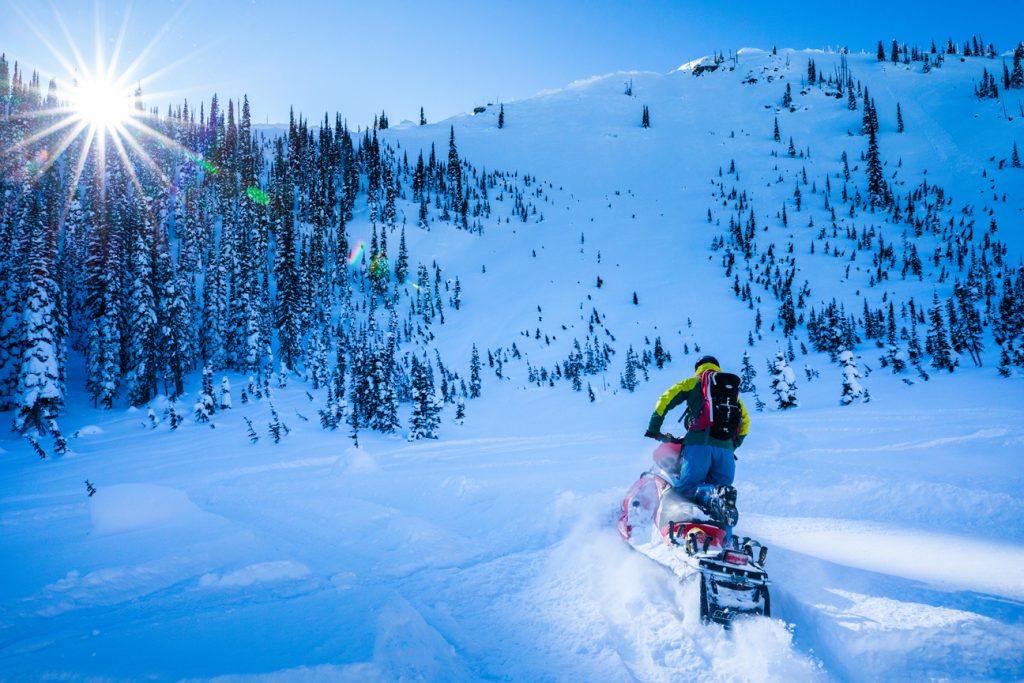We’re very serious about our backcountry terrain around here. We’re also very serious about backcountry safety. The wild and rugged nature of Montana’s high country should never be an afterthought, especially when it’s covered in snow. Avalanche safety should always be top of mind when you’re headed back into the deep stuff, whether via ski, snowboard, snowshoe or snowmobile. Proper gear and know-how are everything.
Here are some recommendations for avalanche safety:
Go With a Guide
Play it safe with a backcountry ski or snowmobile tour. Your guide knows best when it comes to avalanche safety.
Stay In Bounds at Ski Resorts
When recreating at ski resorts, don’t ski or sled the backcountry on your own unless it is permitted AND you are up-to-date on the avalanche forecast, own and know how to use the right avalanche safety gear, and have adequate training.
Get Educated in Avalanche Safety
Know before you go. Take a course in avalanche safety, which will teach you the basics of avalanche safety gear, snow testing, avalanche awareness and avalanche rescue. Avalanche safety education includes courses for motorized and non-motorized snowsports. Courses in avalanche safety are offered online and in the field.
To find courses and education resources, visit:
- avalanche.org
- KBYG – Know Before You Go
- AIARE Avalanche Research + Education
- Tread Lightly!
- Missoula Avalanche
- Flathead Avalanche Center

Check Avalanche Forecasts
Always check the local avalanche forecast before you recreate in the backcountry, and understand what it means. The U.S. and Canada use a five-category avalanche danger estimation system. This North American Avalanche Danger Scale allows avalanche forecasters to communicate avalanche threat—low, moderate, considerable, high, extreme.
Visit avalanche.org for conditions and warnings. For local Western Montana avalanche conditions, advisories and information, visit Missoula Avalanche and the Flathead Avalanche Center.
Carry Avalanche Gear
Learn what gear you need for the backcountry, get the right gear, and know how to use it. This is critical. Find the beacon, shovel, probe and airbag pack that are right for you.
Avalanche beacons (or transceivers) transmit your location so others can find you or you can find them in the aftermath of an avalanche.
Avalanche shovels are essential for backcountry recreation. They can be used to dig out persons buried by snow, but they are also necessary for studying snowpack and digging emergency shelters.
Probes are also essential pieces of backcountry gear. These lightweight, folding poles help you determine how deep the snow is and, in the case of an avalanche rescue, where to begin digging.
Airbag packs feature a bladder that, when pulled, inflates to keep you closer to the surface during an avalanche.
Please note that having avalanche safety gear does not mean you should be reckless and recreate in areas where the avalanche threat is anything but low.
Know Your Snow
Avoid avalanches by learning where and why they occur. Learn to recognize the red flags of an unstable snowpack, which indicate avalanche danger. These include signs of a recent avalanche, or signs of unstable snow. Recent heavy snowfall or rain, or a rapid increase in above freezing temperatures, also creates unstable snow and increases the likelihood of avalanches.
Among other avalanche safety gear, snow study tools and kits are essential pieces of backcountry equipment to determine the safety of the snowpack, but are not an alternative to checking the avalanche forecast before you head out, which is vital.
Engage in Backcountry Sports Responsibly
Learn more about recreating responsibly while playing in the deep stuff, including backcountry skiing, snowboarding, snowshoeing and camping. Read more tips about responsible backcountry snowsports from our friends at Tread Lightly!
October 15, 2021


Comments